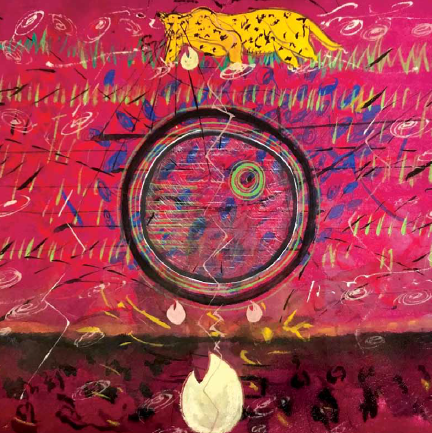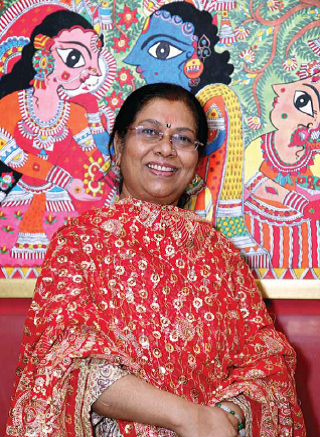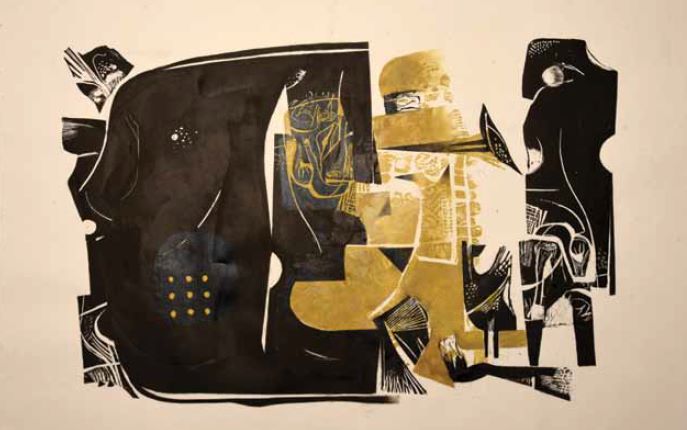
The art of Rodolfo Oviedo Vega can seem purely abstract, yet figuration keeps poking through in ways that give his work complexity and an enigmatic charm
A young eminent artist of El-Salvador, Paris-based Rodolfo Oviedo Vega is one of those great travellers whose tales of adventures amaze us so much as they fascinate us. Living as a practitioner of art amid the chaotic rudiments of creativity, in a city in France, he navigates his way by following the traces of his own footsteps. He marks his trails by collecting the materials like the sand beneath his feet, imbibing the textures underneath his palm, and marvelling at the knowledge of his discoveries. A persistent reader, various books like philosophy, literature, science, and myths have always been his companion in this journey. Yet, the most substantial is his encounter with the theory of spiritualism prevailing in different societies and cultures. Adventurer from Central America, from El Salvador to Chile, going through the archipelago of San Blas, the artist has travelled along India living in Kerala and then in the Himalaya. He has crossed Europe and showed his work in Paris, Madrid, Tallinn and Milan. The memory of his journeys and the places where he has lived are realised on his canvas. The process of creation is a complex assembly conjugating a subtle poetic and a technical mastery full up with references of art history. A qualified archaeologist, he displayed his works at the Indira Gandhi National Centre for the Arts, New Delhi this September The exhibition inaugurated by MoS Meenakshi Lekhi was made possible in coordination with the Embassy of the Republic of El Salvador and Indian Council for Cultural Relation (ICCR).


Rodolfo’s paintings can seem at first glance to be heavy, even opaque on the canvas, yet on closer inspection they became surprisingly varied in their textures. Parts of some works have an appealing heft, with collage elements and layers of oil paint worked into a thick impasto, while others can seem as light and delicate as fallen leaves. His paintings act almost like an axis that centres his distinctive stories. Carefully collected materials like wire, sand, and leaf, amongst others, synthesise together with his memories and result in a well-rehearsed composition. Acrylic and neon painted canvases delightfully demonstrate an accumulation of universal or mythological motifs simplified on the verge of abstraction. Correspondingly, he juxtaposition of geometrical patterns, colours, and textures codify his language yet make them intriguing. Taking an in-depth look at the composition reveals layers of motifs like architecture, temple, rays, the sun, the moon, and undoubtedly more. Perhaps, it depicts the sky with the movement of the sun or the moon in a three-dimensional space where possibly home is the key element. However, Rodolfo says that every painting eludes its viewer to interact for a specific time. The piece must have an inherent essence, intense enough to attract the viewer. It should drive the spectator to take in each detail as well as perceive the painting in its totality. The abstract forms of some works recall portraiture, while the perspectives and horizon line in others harks back to the landscape-painting tradition. Architectural elements frequently appear in Rodolfo’s work– railings, windows, arches, often in sombre colours that emphasise their geometric armatures – and show his interest in urban space and construction.
Far from pure abstraction, these works often lead us into explorations of the aesthetic possibilities of buildings, with their multiple planes and volumes, and the architectural forms of contemporary cities, which, in his hands, can look familiar to any city dweller yet also strange and even a bit alienating. This engagement with urban architecture also suggests a connection to his native El Salvador, the most urbanised country of Latin America. Rodolfo inhabits and plays out these contradictions in his work, without – to his great credit as an artist – ever trying to resolve them into neat packages, creating instead works that are complex, multi-layered and deeply human.









 " >
" >
 " >
" >